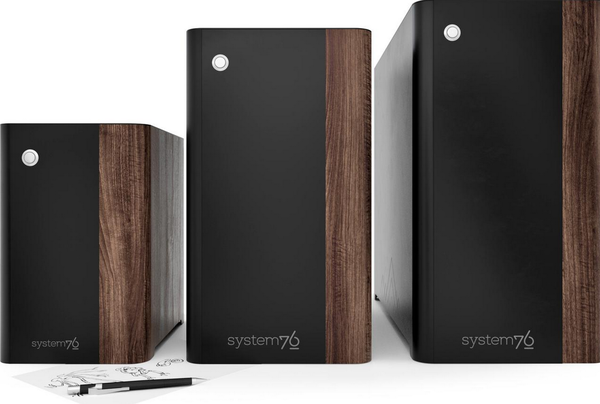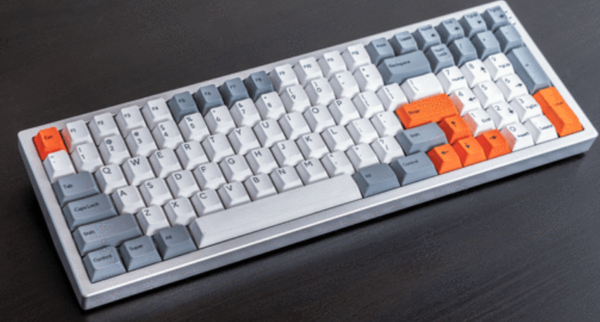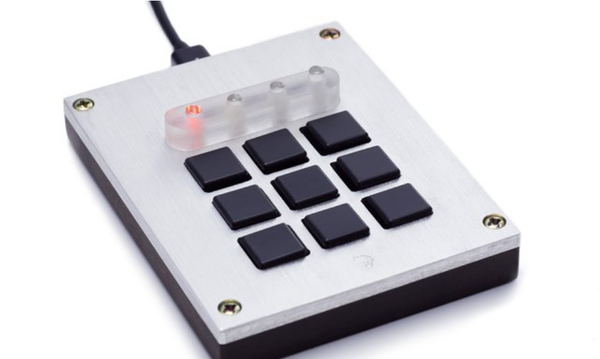The Year 2018 in Open Hardware
Emerging Markets
By2018 saw several open hardware projects reach fruition. Where the open hardware movement goes from here, remains to be seen.
2018 was not “The Year of Open Hardware,” any more than it was the fabled “Year of the Linux Desktop.” All the same, 2018 was a year in which open hardware projects started to move from fundraising and project development to product releases. Many of these open products were traditional hardware, but 2018 also saw the release of innovative tech in the form of new and useful gadgets.
In the background, open hardware hangs on to traditional niches. These niches occur at the intersection of altruism, hobbyists, academia, and the market, to say nothing of crowdfunding and the relative affordability of 3D printing. A prime example of this intersection is the development of prosthetics. Much of the modern work in open hardware began almost a decade ago with the Yale OpenHand project. At the same time, sites like Hackaday.io offer kits and specifications for hobbyists, while the e-NABLE site has become a place for exchanging ideas for everyone from tinkerers to working professionals in the field. As a result, open hardware technology in the field of prosthetics has grown to rival traditional manufacturers in a handful of years.
This niche is a natural one for open hardware not only because of the freely available resources, but for simple economics. Traditionally manufactured prosthetic hands begin at about $30,000, far beyond the budgets of many potential customers. By contrast, an open hardware-based company like the UK based Open Bionics can design a cosmetically-pleasing hand for $200, which is still a large sum in impoverished areas, but far more obtainable. A non-profit called Social Hardware estimates that a need for prosthetic hands in India alone numbers 26,000 and hopes to help meet the demand by offering a development kit on which enthusiasts can learn and later donate their results to those who need them.
New Markets
What marks 2018, however, is open hardware’s emergence in a small way into the market. While workstations and laptops with Linux installed have been available for over a decade if you knew where to look, almost all of these offerings have the usual proprietary firmware. Only a few years ago, the main way to get free hardware was to jailbreak a phone or, in the case of Rockbox, a music player. More recently, companies like Minifree (formerly Gluglug) and Technoethical offered refurbished laptops whose proprietary firmware is replaced by Libreboot. Such devices continue to dominate the Free Software Foundation’s Respect Your Freedom certification that is designed to encourage open hardware development.
Increasingly, though, new open hardware computers are becoming available. For several years, Purism has been selling a line of high-end, security-conscious laptops under the Librem line. From the start, the Librem lines have been perhaps the most open of laptops, but Purism continues to strive for complete hardware freedom for them.
In 2018, Purism was joined by other companies. System76, which builds everything from laptops to servers, rolled out the Thelio line of stylish high-end machines (Figure 1), generating a lot of publicity. Lesser known is the soon-to-be-released MNT Reform laptop, a mid-level product designed to be modular and easy to repair.
Some standard hardware, such as printers and mice, have yet to have open hardware alternatives. However, one area in which open hardware flourishes is keyboards. Their strong position is probably due to the fact that a small but dedicated group has existed for years concerned with keyboard layouts, ergonomics, and the relative virtues of different keyswitches for mechanical keys.
From such interests to open hardware was a small step. 2018 saw the long-awaited release of Keyboardio’s Model 01, a keyboard that has it all, including mechanical keys, ergonomics based on original research, programmable keys, and a stylish maple hardwood base. Probably, too, it is a sign of the growing interest in open hardware that Input Club, which started with do-it-yourself keyboards for hobbyists, is now preordering its own ready to use Kira keyboard (Figure 2).
2018 also saw the development of free phones, an area in which open hardware has been even rarer than in computers. Currently, Technoethical offers its N2, a refurbished Samsung Galaxy Note 2 N7100 that runs Replicant, a free version of Android, but it remains a work in progress, and at the price of EUR498 is unlikely to seriously alter the market. More promising is /e/ (formerly eelo), a startup created by Gaël Duval, the founder of the Mandrake distribution. While /e/ spent most of the year under the radar, it is developing a free smartphone likely to be released some time in 2019. Many, too, are looking forward to Purism’s much publicized Librem 5 (Figure 3), originally scheduled for release in January 2019, but now with a due date of April 2019. Although 2018 was not the year of the open phone, it has probably laid the groundwork for 2019 to be that year.
Open computer hardware and phones both face the problem of saturated markets. However, one category that seems especially promising for open hardware is small, innovative devices with no already existing commercial counterpart. Such devices, with the help of crowdfunding, offer the possibility of a small business, enough to earn their developers a living but unlikely to be the next Google or Red Hat.
One such device in 2018 was Signet, a physical security USB device for safeguarding any kind of computer. The idea was innovative enough that Purism has released its own version of the device, called the Librem Key. Another one is Palitra (Figure 4), an input device for keyboard shortcuts that is not only convenient, but may also reduce repetitive stress injuries by reducing mouse use. In the end, such devices may be where open hardware first comes into its own.
Status Report
One potential challenge for open hardware may be what I call the Arts and Crafts Dilemma. Th reference is to the early twentieth century movement that included among its goals an effort to improve public taste and provide an alternative to the excesses of Victorian aesthetics. The followers of Arts and Crafts succeeded in producing attractive designs, but mostly in such small numbers that only the rich could afford them. So far, open hardware threatens to find itself in a similar position. Purism, System76’s Thelio, and Keyboardio’s Model 01 all offer unique user experiences, but at a cost that seems likely to keep them out of the average users’ hands. So far, whether a solution to the dilemma exists remains unknown.
Under these circumstances, it seems no coincidence that the traditional hardware manufacturers have not developed much of an interest in open hardware. At the close of 2018, open hardware remains out of the sphere of the manufacturing giants.
Open hardware seems to be at much the same stage as open source software was just before the start of the millennium. The potential is obvious, and some minor successes are visible, but whether open hardware can revolutionize manufacturing remains to be seen.
Subscribe to our Linux Newsletters
Find Linux and Open Source Jobs
Subscribe to our ADMIN Newsletters
Support Our Work
Linux Magazine content is made possible with support from readers like you. Please consider contributing when you’ve found an article to be beneficial.

News
-
Parrot OS Switches to KDE Plasma Desktop
Yet another distro is making the move to the KDE Plasma desktop.
-
TUXEDO Announces Gemini 17
TUXEDO Computers has released the fourth generation of its Gemini laptop with plenty of updates.
-
Two New Distros Adopt Enlightenment
MX Moksha and AV Linux 25 join ranks with Bodhi Linux and embrace the Enlightenment desktop.
-
Solus Linux 4.8 Removes Python 2
Solus Linux 4.8 has been released with the latest Linux kernel, updated desktops, and a key removal.
-
Zorin OS 18 Hits over a Million Downloads
If you doubt Linux isn't gaining popularity, you only have to look at Zorin OS's download numbers.
-
TUXEDO Computers Scraps Snapdragon X1E-Based Laptop
Due to issues with a Snapdragon CPU, TUXEDO Computers has cancelled its plans to release a laptop based on this elite hardware.
-
Debian Unleashes Debian Libre Live
Debian Libre Live keeps your machine free of proprietary software.
-
Valve Announces Pending Release of Steam Machine
Shout it to the heavens: Steam Machine, powered by Linux, is set to arrive in 2026.
-
Happy Birthday, ADMIN Magazine!
ADMIN is celebrating its 15th anniversary with issue #90.
-
Another Linux Malware Discovered
Russian hackers use Hyper-V to hide malware within Linux virtual machines.





